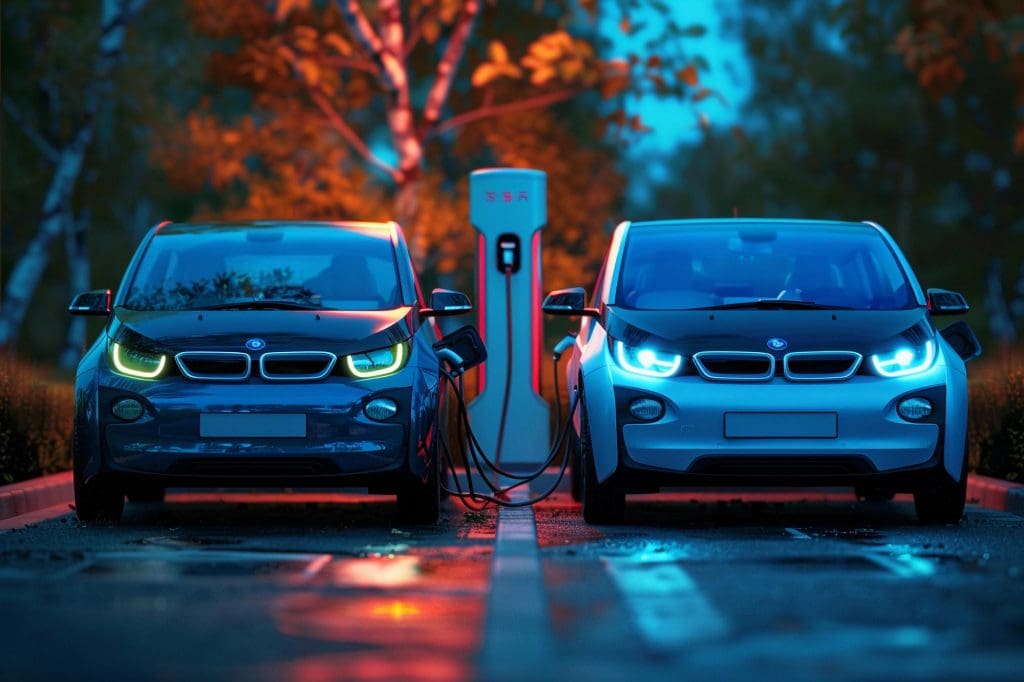Hybrid vs Electric vs PHEV: Which is Right for You? (UK)
The road to 2035—when new petrol and diesel cars will be a thing of the past—is getting shorter. But the world of “electrified” vehicles can feel like a maze of acronyms and tech jargon. You’ve heard the terms, but what’s the real-world difference between a Hybrid, a Plug-in Hybrid (PHEV), and a full Battery Electric Vehicle (BEV)?
Choosing the right one isn’t about which is “best,” but which is best for you. Your commute, access to charging, and driving habits will all help point to the perfect match.
Let’s break it down.
1. The Self-Charging Hybrid (HEV)
In a Nutshell: A petrol car that gives itself an electric boost.
Think of a Toyota Prius or Hyundai Kona Hybrid. A Hybrid Electric Vehicle (HEV) has both a petrol engine and a small electric motor powered by a compact battery.
How It Works
The car intelligently switches between the petrol engine, electric motor, or both to maximise efficiency. The battery recharges automatically via regenerative braking and the engine itself.
The Key Feature
You never have to plug it in—simply fill up with petrol like any normal car.
Pros
- Effortless Transition: No need for a charger or new habits.
- Lower Fuel Consumption: Noticeable MPG gains in stop-start traffic.
- No Range Anxiety: Drive long distances without worrying about charging.
Cons
- Minimal Electric Driving: Only about a mile of EV-only range.
- Still Petrol-Powered: Tailpipe emissions and fuel duty apply.
- No Grants: Not eligible for EV grants or low BiK rates.
Who is it for? The cautious adopter. Ideal if you drive mainly in towns and cities, want better fuel economy, and aren’t ready for charging just yet.
2. The Plug-in Hybrid (PHEV)
In a Nutshell: The part-time electric car.
A Plug-in Hybrid, such as the BMW 330e or Kia Sportage PHEV, takes hybrid technology further with a bigger battery and stronger electric motor.
How It Works
Plug it into a home or public charger to top up the battery, giving 25–50 miles of pure electric range. Once the battery runs out, the petrol engine takes over, operating like a normal hybrid.
The Key Feature
The ability to complete most daily commutes—under 20 miles in the UK—entirely on cheap, clean electric power, with petrol backup for long trips.
Pros
- Best of Both Worlds: Electric for short trips, petrol for long ones.
- Huge Cost Savings: If charged regularly, you’ll rarely visit a petrol station.
- Company Car Favourite: Exceptionally low BiK rates make it popular with business drivers.
Cons
- You Must Charge It: Otherwise, it’s just a heavy petrol car.
- Complexity & Weight: More components and higher running weight.
- Reduced Boot Space: Batteries often take up room in the boot.
Who is it for? The strategic driver. If you have a short daily commute and access to a home charger, but still make frequent long journeys, a PHEV offers the ideal bridge between petrol and electric.
3. The Battery Electric Vehicle (BEV)
In a Nutshell: 100% electric. No engine. No exhaust. No emissions.
This is the fully electric car—think Tesla Model Y, Volkswagen ID.3, or Polestar 2. It’s powered entirely by electricity stored in a large lithium-ion battery.
How It Works
Charge the battery at home, work, or public points, and it powers one or more motors to drive the wheels—smooth, silent, and instant.
The Key Feature
Zero tailpipe emissions, ultra-low running costs, and near-silent performance.
Pros
- Incredibly Cheap to Run: Home charging can cost less than 4p per mile on EV tariffs.
- Zero Emissions: Exempt from ULEZ and most Clean Air Zone charges.
- Peak Performance: Instant torque, smooth acceleration, and quiet cruising.
- Simpler Maintenance: Fewer moving parts mean lower servicing costs.
- Maximum Incentives: Eligible for grants and lowest BiK rate (2% until 2028).
Cons
- Requires Planning: You’ll need to factor in charging for long trips.
- Public Charging Variability: Still inconsistent in some UK areas.
- Higher Purchase Price: Though the Total Cost of Ownership is often lower.
Who is it for? The future-ready driver. With home charging and typical ranges of 200–300+ miles, a BEV is the clear long-term choice for most UK motorists.
The Verdict: Which is Right for You?
Ask yourself one simple question: How do I use my car 95% of the time?
- Choose a Hybrid (HEV): If you can’t charge at home but want to cut fuel bills and emissions in urban driving.
- Choose a Plug-in Hybrid (PHEV): If you can charge at home and drive under 40 miles daily but still want petrol backup for longer journeys.
- Choose a Battery Electric (BEV): If you can charge at home and want the best efficiency, lowest running costs, and cleanest drive possible.
Now that you understand the key differences, why not check out our next feature: Top 5 Easiest EVs to Live With for First-Time Buyers.
